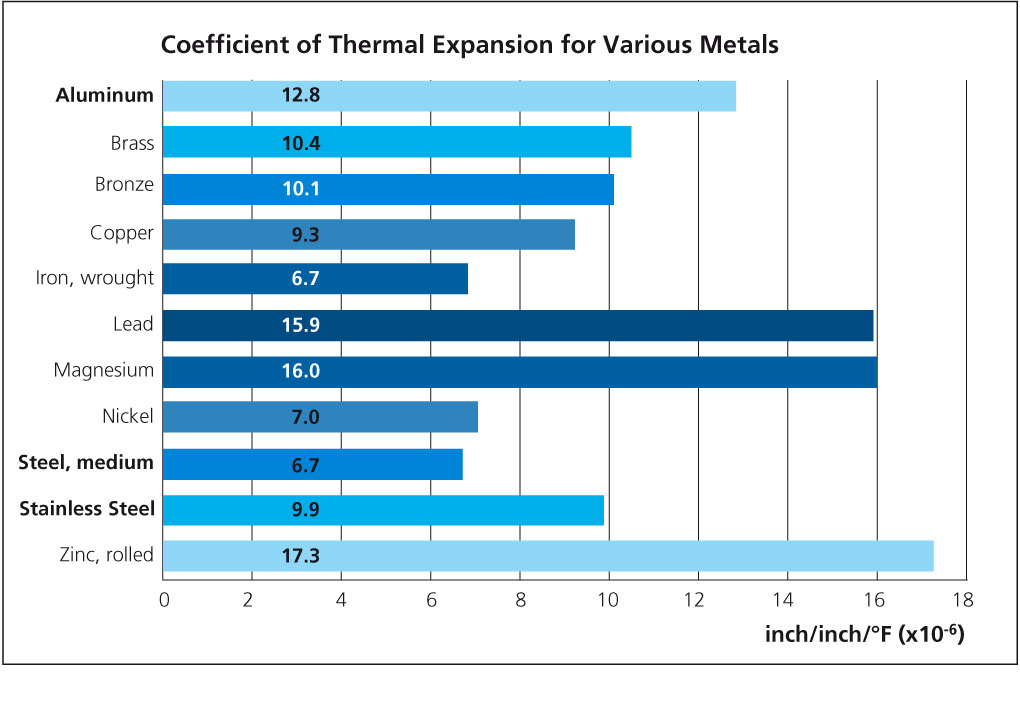Fixture for braze assembly during brazing
Considerations
Fixtures are used to hold the braze assembly in place during brazing. Surfaces with molten filler metal are very “greasy” and the fixtures need to hold the shape and tolerances during heat-up. Fixtures may also be used to support attachments such as inlet or outlet tubes.
When considering the type or configuration of fixtures to use, there are a number of considerations to take into account. For example, differential expansion between fixture and braze assembly increases part compression significantly during heat-up. One must be acutely aware of the differences in the coefficients of thermal expansion between stainless steel and aluminum. Aluminum expands much faster than stainless steel and this must be taken into consideration when designing a fixture. This is important to prevent distortion of the heat exchanger at final brazing temperature.
It is also important to note that molten filler metal dissolves steel and stainless steel. It is important to minimize contact with filler metal. It is also possible for aluminum to braze to fixtures. It is therefore important to either use a brazing stop-off for surfaces in contact with aluminum or to oxidize the fixtures when new or after cleaning. This can be done simply by running the fixtures through the brazing furnace.

Permanent Fixtures
The most common type of fixtures for heat exchanger manufacturing are permanent fixtures, ones that are used over and over again. These are usually made and should be made from stainless steel to prevent rust contamination in the slurry tank. The preferred material for fixtures is AISI 309 or 316, but most stainless steel alloys are perfectly acceptable.
Springs may be used in the fixture to apply a certain “holding” pressure to the heat exchanger during brazing. However, the technique of using springs seems to be less common than in the past. More often now, fixtures are designed with fixed dimensions. The heat exchanger is compressed slightly and loaded into the fixture. When the source of compression is removed, the natural spring-back holds the heat exchanger in place against the fixture.
Cleaning
As flux builds up on permanent fixtures and may contaminate the flux slurry, it is necessary to routinely clean the fixtures to remove flux and other contaminants that may have accumulated. There is no convenient chemical cleaning method to remove flux residues. The most appropriate methods are by mechanical means such as wire brushing or grit-blasting.
Once the residues have been removed by one of the above methods, the fixtures should be oxidized by running them through the brazing furnace. Non-oxidized fixtures are likely to stick or even braze to the work piece.
Steel banding
An alternative to permanent fixtures is the use of disposable steel banding. Since mild steel can be used, material costs are kept to a minimum. Wax coated mild steel bands are often used to prevent the banding material from rusting that can contaminate the flux slurry and discolor the heat exchanger. The steel bands are used only once and are disposed of after brazing.
Steel banding requires experimentation to determine the appropriate tension and positioning. Thereafter, an automatic banding machine should be used to ensure consistency.

The heat exchanger is compressed slightly and loaded into the fixture. When the source of compression is removed, the natural spring-back holds the heat exchanger in place against the fixture.